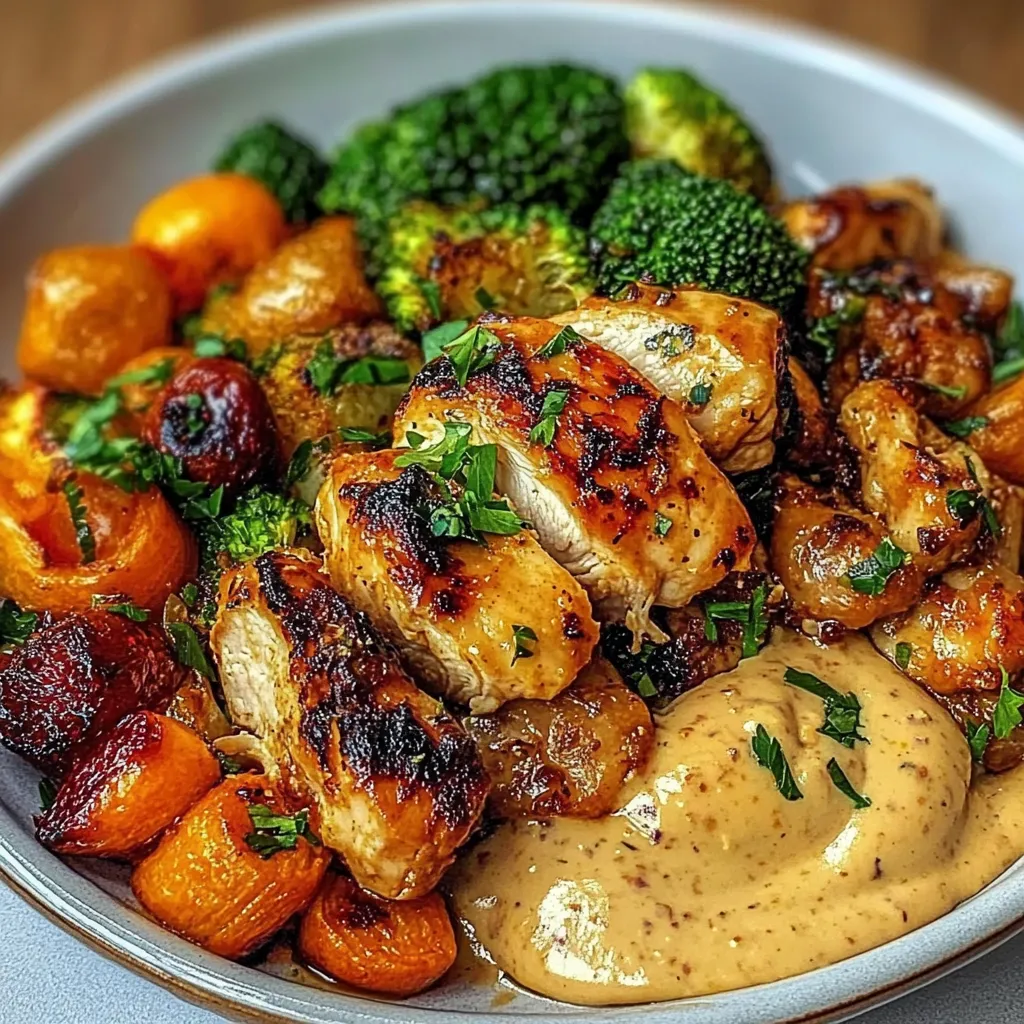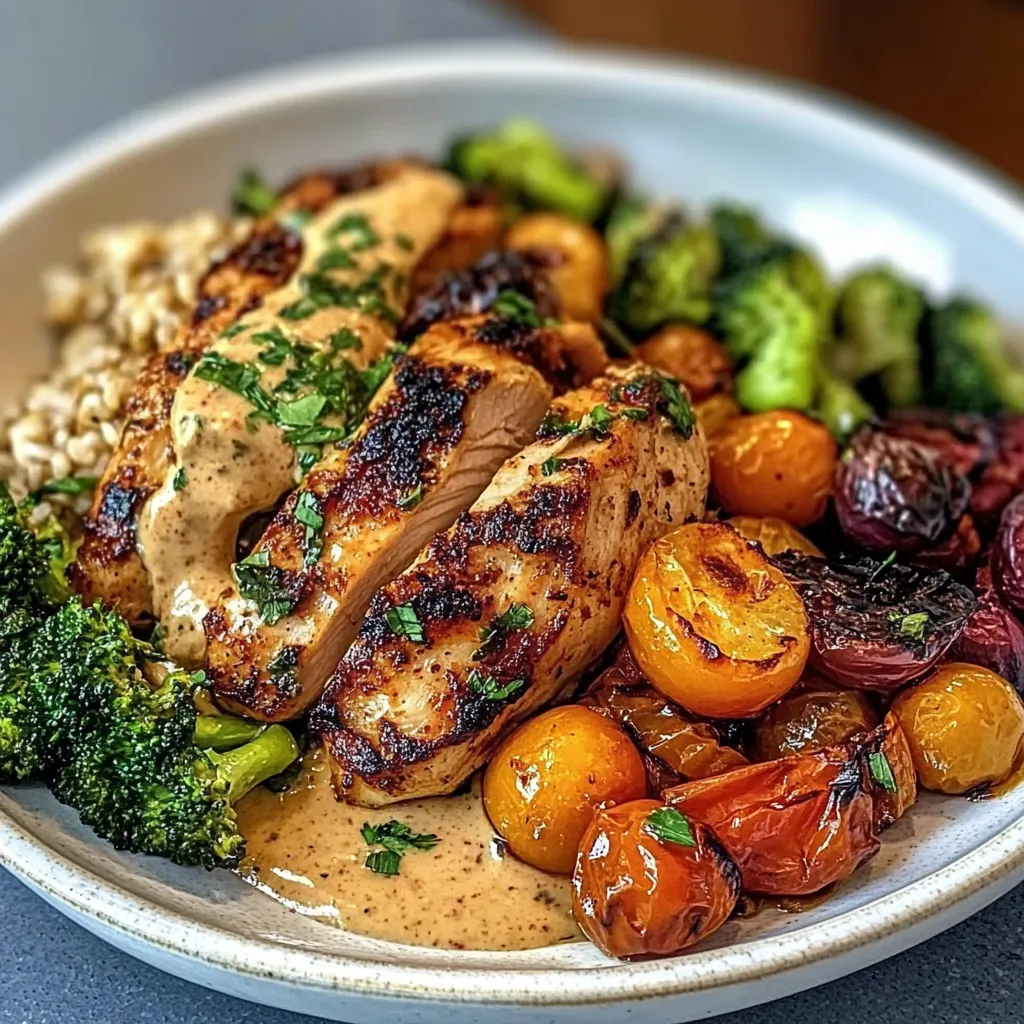Pescatarian Mediterranean

Embrace the vibrant flavors of the Pescatarian Mediterranean Lifestyle—a culinary journey that pairs the health benefits of seafood with the abundance of fresh vegetables, herbs, and whole grains. Rich in nutrients and bursting with taste, this style of eating not only supports a healthy lifestyle but also transports you to sun-kissed shores where meals are crafted from simple, quality ingredients.
Whether you’re a seasoned chef or a kitchen novice, the beauty of Mediterranean cuisine lies in its versatility. Feel free to experiment with local catch like salmon or sardines, or customize your dishes by incorporating seasonal vegetables. To maximize your results, use fresh herbs and quality olive oil, which are essential for enhancing flavors. With a bit of creativity, you can create delightful recipes that reflect the essence of the Mediterranean lifestyle while keeping your meals exciting and nutritious. Let’s dive into some delectable pescatarian dishes that will fill your table with health and taste!
Ingredients for Pescatarian Mediterranean Lifestyle:
Fresh Seafood
- 2 pounds of shrimp, deveined and tails removed
- 1 pound of scallops, cleaned
- 1.5 pounds of fresh salmon fillets, skin on or off as preferred
Vegetables
- 2 cups of cherry tomatoes, halved
- 1 large zucchini, sliced into half-moons
- 1 medium red onion, chopped
- 1 red bell pepper, diced
- 1 cup of artichoke hearts, canned or marinated
- 2 cups of spinach, fresh
Grains
- 3 cups of cooked quinoa
- 1.5 cups of whole-grain couscous (uncooked)
Herbs and Spices
- 1 tablespoon of dried oregano
- 1 tablespoon of dried thyme
- 2 teaspoons of garlic powder
- Salt and pepper to taste
Oils and Sauces
- 1/2 cup of extra virgin olive oil
- 2 tablespoons of lemon juice, freshly squeezed
- 2 tablespoons of balsamic vinegar
Cheese (optional)
- 1 cup of feta cheese, crumbled (for an added tanginess)
- 1 cup of grated Parmesan cheese, for a savory touch
Flavor Variations
For a unique twist on the classic Pescatarian Mediterranean Lifestyle recipe, consider:
- Incorporating different seafood choices such as mussels or squid.
- Adding fresh herbs like basil or dill for a fragrant note.
- Using sun-dried tomatoes instead of fresh for an added depth of flavor.
- Substituting brown rice or whole wheat pasta for a different texture.
This diverse array of ingredients not only enhances flavor but also brings a wealth of nutrients, aligning perfectly with the principles of a healthy, sustainable Mediterranean lifestyle.

How to prepare Pescatarian Mediterranean Lifestyle:
Embracing a pescatarian Mediterranean lifestyle involves fresh, wholesome ingredients and simple preparation. Follow these steps to create meals that celebrate this beneficial way of eating.
Gather Your Ingredients for Pescatarian Mediterranean Lifestyle
Start by collecting fresh produce. Choose vegetables like tomatoes, cucumbers, bell peppers, and leafy greens. Select herbs such as basil, parsley, and dill for flavor.
Next, select high-quality seafood. Fresh fish like salmon, tuna, and sardines are excellent choices. You can also include shellfish like shrimp and mussels as delicious alternatives.
Prepare Your Seafood
Begin by cleaning your seafood thoroughly. Rinse fish fillets under cold water and gently pat them dry with paper towels. For shellfish, scrub the shells under running water to remove any grit.
Marinate the seafood to enhance its flavor. Mix olive oil, lemon juice, garlic, and herbs in a bowl. Add the fish or shellfish and let it rest for 30 minutes. This step will infuse the seafood with aromatic flavors.
Cook the Seafood
Heat a non-stick skillet over medium-high heat. Once hot, add a drizzle of olive oil. Carefully place the marinated fish or shellfish in the skillet.
Cook the fish. For fillets, cook for 3-4 minutes on each side until golden brown and flaky. If using shellfish, sauté until they turn opaque and their shells open. This usually takes about 5-7 minutes.
Prep the Accompaniments
While the seafood cooks, prepare a fresh salad. Chop your gathered vegetables and mix them in a large bowl. Dress the salad with olive oil, lemon juice, salt, and pepper.
Cook grains such as quinoa or couscous as a hearty addition. Follow the package instructions, using vegetable broth for added flavor. This can be prepared in parallel with the seafood.
Assemble Your Dish
Once everything is cooked, plate your seafood alongside the salad and grain. Add a wedge of lemon to enhance the flavors even further.
Enjoy a wholesome meal that captures the essence of the pescatarian Mediterranean lifestyle. Share and savor the flavors with family and friends!
Tips for the Perfect Pescatarian Mediterranean Lifestyle
Adopting a pescatarian Mediterranean lifestyle can be a delightful culinary experience. With fresh seafood, vibrant vegetables, and herbs, your meals will burst with flavor. Here are some tips to help you embrace this healthy way of eating.
Quality Ingredients Matter
When starting your pescatarian journey, choose fresh, high-quality ingredients. Visit local farmers’ markets for vegetables and herbs. Look for seafood that is sustainably sourced. Fresh fish should have clear eyes, shiny skin, and a mild ocean smell, not a fishy odor. High-quality olive oil is essential too. Use extra virgin olive oil for dressings and drizzling, and a good regular olive oil for cooking.
Temperature Control for Perfect Cooking
Cooking seafood perfectly requires attention to temperature. Overcooking fish can lead to a dry and rubbery texture. For most fish, aim for an internal temperature of 125°F to 145°F. Use a food thermometer for accuracy. When grilling or pan-frying, preheat your pan or grill to achieve a nice sear. For delicate fish like flounder, consider using parchment paper or foil to keep moisture in.
Healthy Substitutions
Maintaining a pescatarian diet offers flexibility. If you have any dietary restrictions, consider these substitutions. For a gluten-free option, use quinoa or brown rice instead of pasta. Swap heavy creams with pureed avocado or cashews for sauces that are creamy yet light. If you’re dairy-free, explore plant-based cheeses and yogurts that can complement many Mediterranean dishes. For added protein, include beans or lentils in salads and sides.
Seasoning for Flavor
The Mediterranean lifestyle thrives on flavor. Use fresh herbs like basil, parsley, and dill to enhance your dishes. Citrus fruits like lemons and oranges brighten flavors and add zest. Don’t shy away from spices such as cumin, paprika, and oregano which can elevate simple dishes. Marinating fish adds flavor and moisture. Consider a mixture of olive oil, lemon juice, garlic, and herbs for an easy and delicious marinade.
Embracing a Pescatarian Mediterranean lifestyle is about enjoying wholesome ingredients and flavorful dishes. With these tips, you’ll be well on your way to creating satisfying meals that nourish both body and soul.
Storage Tips for Pescatarian Mediterranean Lifestyle:
Maintaining the freshness of your ingredients is vital in a pescatarian Mediterranean lifestyle. Proper storage helps preserve flavor and nutritional quality. Here are some effective storage tips to keep your seafood, vegetables, and pantry staples in top condition.
Fish and Seafood Storage
When you bring home fresh fish or seafood, prioritize immediate storage. Wrap the fish tightly in plastic wrap or aluminum foil, then place it in an airtight container or a resealable plastic bag. Store it in the coldest part of the refrigerator, ideally at temperatures below 40°F (4°C). Consume fresh seafood within 1-2 days for the best taste.
If you can’t use it right away, freeze it. Rinse the seafood under cold water, pat it dry, and wrap it tightly. Use freezer-safe bags or containers to prevent freezer burn. Fresh fish can last up to six months in the freezer, while shellfish can remain viable for about three months.
Vegetable Storage
Many Mediterranean recipes highlight fresh vegetables. To keep them fresh longer, store greens like spinach and kale in perforated plastic bags, allowing airflow while retaining moisture. Keep hardy vegetables, such as carrots and bell peppers, in the crisper drawer of your refrigerator, where humidity levels remain high.
For tomatoes, store them at room temperature to preserve flavor and texture. Avoid refrigeration for tomatoes, as it can change their taste. If you have herbs like basil, store them upright in a glass with water, covering the leaves loosely with a plastic bag for added moisture.
Pasta and Grains Storage
Pasta and grains are staples in a Mediterranean pantry. Store these items in airtight containers in a cool, dry place. Keep them away from sunlight and humidity to maintain their freshness. Whole grains can last a year or more when stored properly, while pasta retains quality for up to two years.
Condiments and Oils
Olive oil is essential in Mediterranean cooking. Store it in a dark glass bottle or a container in a cool place, away from heat sources and direct sunlight. Proper storage can extend its shelf life to about two years. Always check the expiration date on other condiments and spices, keeping them sealed and stored in a dry area.
By following these storage tips, you can enjoy fresh, flavorful ingredients that enhance your meals in a pescatarian Mediterranean lifestyle.
Related Recipes for a Pescatarian Mediterranean Lifestyle
If you enjoy a Pescatarian Mediterranean Lifestyle, you’ll love these related recipes. They share similar ingredients, flavors, and cooking techniques, making them perfect companions to your existing meals.
First, try a wholesome Greek Salad. This refreshing dish combines tomatoes, cucumbers, red onions, Kalamata olives, and feta cheese, all drizzled with olive oil and lemon juice. The vibrant colors and fresh flavors complement seafood beautifully, especially grilled fish.
Next on the list is Lemon Garlic Shrimp with Quinoa. This recipe highlights succulent shrimp sautéed in garlic and lemon, served over a nutritious bed of quinoa. Both the shrimp and quinoa provide protein, ensuring a balanced, filling meal that aligns perfectly with Mediterranean principles.
Consider making a Chickpea and Spinach Stew as well. This hearty dish incorporates chickpeas, fresh spinach, and tomatoes, seasoned with herbs like oregano and basil. It pairs well with fish, adding a plant-based protein element to your meal, and helps create a fulfilling dining experience.
Lastly, don’t miss out on Roasted Vegetable and Feta Pasta. Toss your choice of colorful vegetables and feta cheese with pasta and a light olive oil dressing. This dish brings together vegetarian flavors and textures that harmonize with the seafood you love, enhancing the overall dining experience.
These recipes not only enrich your meals but also maintain the principles of a Mediterranean lifestyle, focusing on fresh ingredients and healthful eating.
Frequently Asked Questions:
What is the Pescatarian Mediterranean Lifestyle?
The Pescatarian Mediterranean Lifestyle is a diet that incorporates fish and seafood as the primary sources of protein, while emphasizing the consumption of fruits, vegetables, whole grains, and healthy fats, particularly olive oil. This way of eating is deeply rooted in the traditions and culinary practices of Mediterranean countries, aiming for not only nutritional benefits but also an enhancement of overall well-being.
Are there health benefits to following a Mediterranean-based pescatarian diet?
Yes, embracing a Mediterranean-style diet that includes fish can lead to numerous health advantages. Studies show that this eating pattern is linked to reduced risks of heart disease, improved brain health, and lower rates of chronic illnesses. The omega-3 fatty acids found in fatty fish contribute to heart health, while the abundance of fruits and vegetables provides essential vitamins, minerals, and antioxidants.
Can I follow a Pescatarian Mediterranean diet if I have dietary restrictions?
Absolutely! The Pescatarian Mediterranean Lifestyle is versatile and can be adapted to accommodate various dietary restrictions. For example, those who are lactose intolerant can still enjoy dairy-free options made from nuts or soy. Additionally, gluten-free grains and legumes can easily be incorporated into meals, making this diet accessible for many individuals.
What types of fish are recommended in this lifestyle?
Incorporating a variety of fish and seafood is key to the pescatarian Mediterranean lifestyle. Popular options include salmon, sardines, mackerel, and anchovies, all of which are rich in omega-3 fatty acids. It’s important to choose sustainably sourced fish to support marine ecosystems and maintain a healthy environment.
How can I start adopting a Pescatarian Mediterranean Lifestyle?
To begin embracing a pescatarian Mediterranean lifestyle, focus on incorporating more fish into your meals while gradually reducing red meat and poultry. Start by exploring Mediterranean staples such as fresh salads, grains like quinoa, and olive oil-based dressings. Experimenting with various fish recipes and cooking techniques will also make the transition enjoyable and flavorful.
Is the Pescatarian Mediterranean Lifestyle suitable for everyone?
While the Pescatarian Mediterranean lifestyle can be a nutritious choice for many, it’s essential to consider individual health needs and preferences. People with seafood allergies should avoid this diet altogether. However, for those who are looking to enhance their health through wholesome food choices, this lifestyle can offer a balanced and satisfying approach to eating.
Conclusion:
The Pescatarian Mediterranean Lifestyle embraces vibrant ingredients and wholesome meals that are both simple and adaptable. By integrating fresh seafood, seasonal vegetables, and aromatic herbs, you create dishes that not only nourish but also delight the senses. This diet’s emphasis on flexibility means you can easily customize your meals based on personal preferences or regional delicacies. Whether you prefer light salads or hearty stews, the possibilities are endless. Additionally, with the easy substitution of ingredients, it’s straightforward to cater to dietary needs while enjoying diverse flavors. Embracing this lifestyle not only contributes to well-being but also encourages culinary creativity in your kitchen. Enhance your cooking experience by exploring the rich tapestry of Mediterranean flavors, making every meal a celebration of health and taste that adheres to the exquisite principles of a pescatarian diet.
Print
Pescatarian Mediterranean
- Total Time: 30 minutes
- Yield: 2 servings 1x
Description
A vibrant and heart-healthy Mediterranean bowl featuring seasoned salmon, quinoa, fresh veggies, tangy olives, and a creamy tzatziki drizzle. Perfect for lunch or dinner with nourishing ingredients from the sea and garden.
Ingredients
For the Salmon:
-
2 salmon fillets (about 6 oz each)
-
1 tbsp olive oil
-
1 tsp dried oregano
-
½ tsp paprika
-
Salt and pepper to taste
-
Juice of ½ lemon
For the Bowl:
-
1 cup cooked quinoa (or couscous)
-
1 cup cherry tomatoes, halved
-
½ cucumber, diced
-
¼ red onion, thinly sliced
-
¼ cup kalamata olives, pitted and halved
-
¼ cup crumbled feta cheese
-
Fresh parsley or mint for garnish
For the Tzatziki Sauce (optional):
-
½ cup Greek yogurt
-
¼ cucumber, finely grated and squeezed
-
1 garlic clove, minced
-
1 tbsp lemon juice
-
1 tbsp chopped dill or mint
-
Salt to taste
Instructions
-
Preheat oven to 400°F (200°C). Rub salmon with olive oil, lemon juice, oregano, paprika, salt, and pepper.
-
Bake for 12–15 minutes, or until cooked through and flaky.
-
While salmon bakes, prepare quinoa and chop vegetables.
-
Mix tzatziki sauce ingredients in a bowl and chill.
-
Assemble bowls: Add a base of quinoa, top with veggies, salmon, feta, and olives.
-
Drizzle with tzatziki and sprinkle fresh herbs on top.
Notes
-
Swap salmon with grilled shrimp or tuna for variety.
-
Vegan option: Replace salmon and feta with roasted chickpeas and hummus.
-
Great for meal prep—store components separately and assemble when ready.
- Prep Time: 15 minutes
- Cook Time: 15 minutes
Nutrition
- Calories: 480 kcal
- Sugar: 4g
- Sodium: 480mg
- Fat: 26g
- Saturated Fat: 6g
- Carbohydrates: 28 g
- Fiber: 5g
- Protein: 34g
